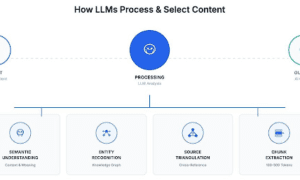Welcome to our blog, where we explore the ever-evolving landscape of global finance! Today, we delve into a fascinating phenomenon that is revolutionizing how money moves around the world: borderless payments. Gone are the days when international transactions were bound by physical borders and traditional banking systems. With technological advancements and innovative financial solutions on the rise, we find ourselves in an era of seamless cross-border transactions that transcend geographical limitations. In this post, we will unravel the impact of these borderless payments on the global economy—a force that is reshaping industries, empowering individuals, and redefining what it means to be part of a connected world.
Introduction
Borderless payments are a new form of payment that allows people and businesses to conduct transactions without having to go through any type of financial institution or intermediary. This cuts out the middleman, which can lead to lower costs and faster transactions.
The benefits of borderless payments include increased efficiency, increased transparency, and decreased risk. For businesses, borderless payments can help them reduce costs and improve their liquidity. They can also expand their customer base by reaching new markets that are not accessible through traditional channels.
However, there are some challenges that must be addressed if borderless payments are to become widespread. One problem is that many people remain unfamiliar with this new form of payment. Another issue is that some countries have stricter regulations governing how foreign currency can be used, which could limit the effectiveness of borderless payments in those countries.
How do they revolutionize the global economy?
Traditional methods of transferring money between countries involve exchanging currency and crossing borders. This process can be time-consuming and difficult, especially for large transactions. Transnational payments, on the other hand, rely on electronic technologies and are conducted over the internet or through mobile networks. These payments allow people to transfer money without having to go through a bank or financial institution.
The benefits of transnational payments are clear. They are faster and more efficient than traditional methods, and they reduce costs associated with cross-border transactions. In addition, transnational payments can help improve global trade relations by making it easier for businesses to conduct transactions with each other.
Despite these benefits, transnational payments remain relatively new technologies. As a result, they have not yet had a large impact on the global economy. This is likely to change in the future as borderless payments become more widespread and accepted by both consumers and businesses.
How might they impact the future of the world economy?
Traditional payment systems are based on the premise that a sender and receiver must be in the same country to complete a transaction. This limitation has slowed down global commerce and caused significant financial headaches for businesses and consumers. With borderless payments, however, transactions can take place between anyone, anywhere in the world.
The potential benefits of this technology are enormous. Transactions between countries could become much faster, cheaper, and more efficient. Moreover, it would open up new markets for goods and services around the world. The impact of borderless payments on the global economy is therefore extremely important.
There are some concerns, though. For example, some experts worry that without a centralized authority to monitor and manage transactions, there could be widespread fraud and cybercrime. Additionally, there is still some hesitance among consumers to adopt new payment methods. However, as technology advances and global commerce continues to grow, the impact of borderless payments on the future of the world economy will no doubt be profound.
Conclusion
The global economy is changing at a rapid pace, and the way we pay for goods and services is no exception. With the rise of new technologies like blockchain, digital currencies, and biometric identification, strides are being made to create a more borderless world where transactions are done without the interference or fees associated with traditional banking systems. While there are many challenges to overcome before this vision can be fully realized, it nonetheless has the potential to revolutionize industries and change the way we live our lives.



































